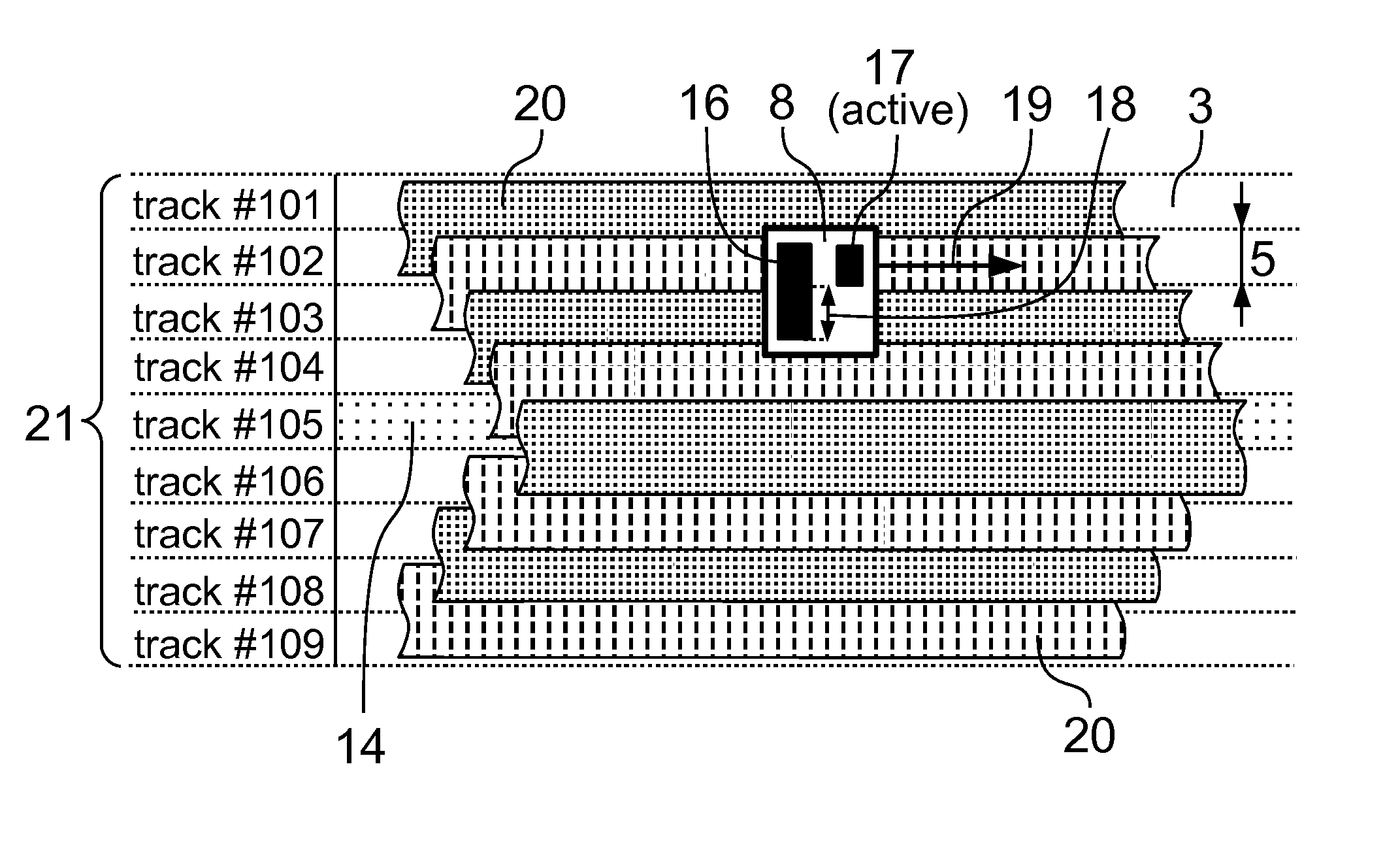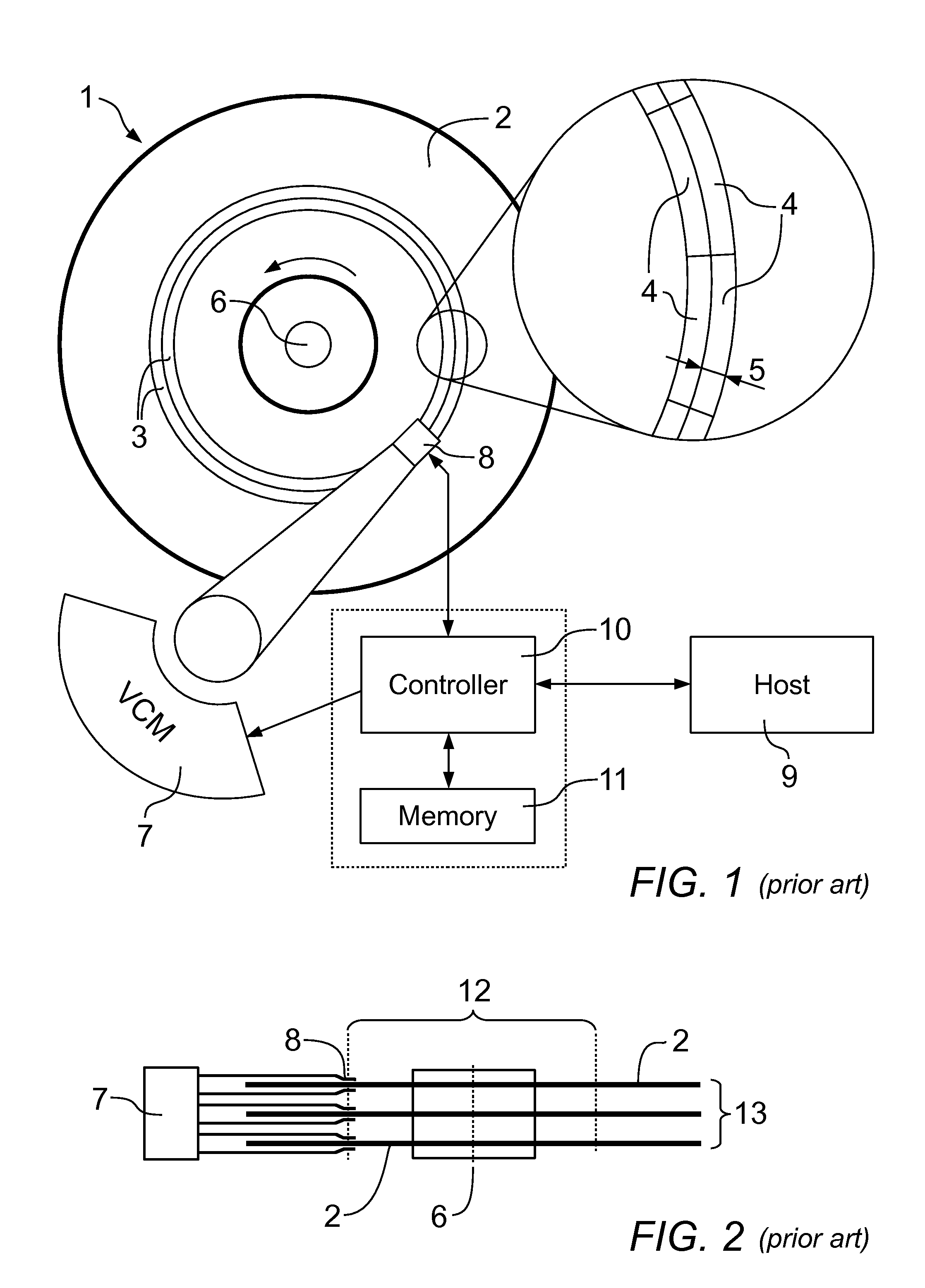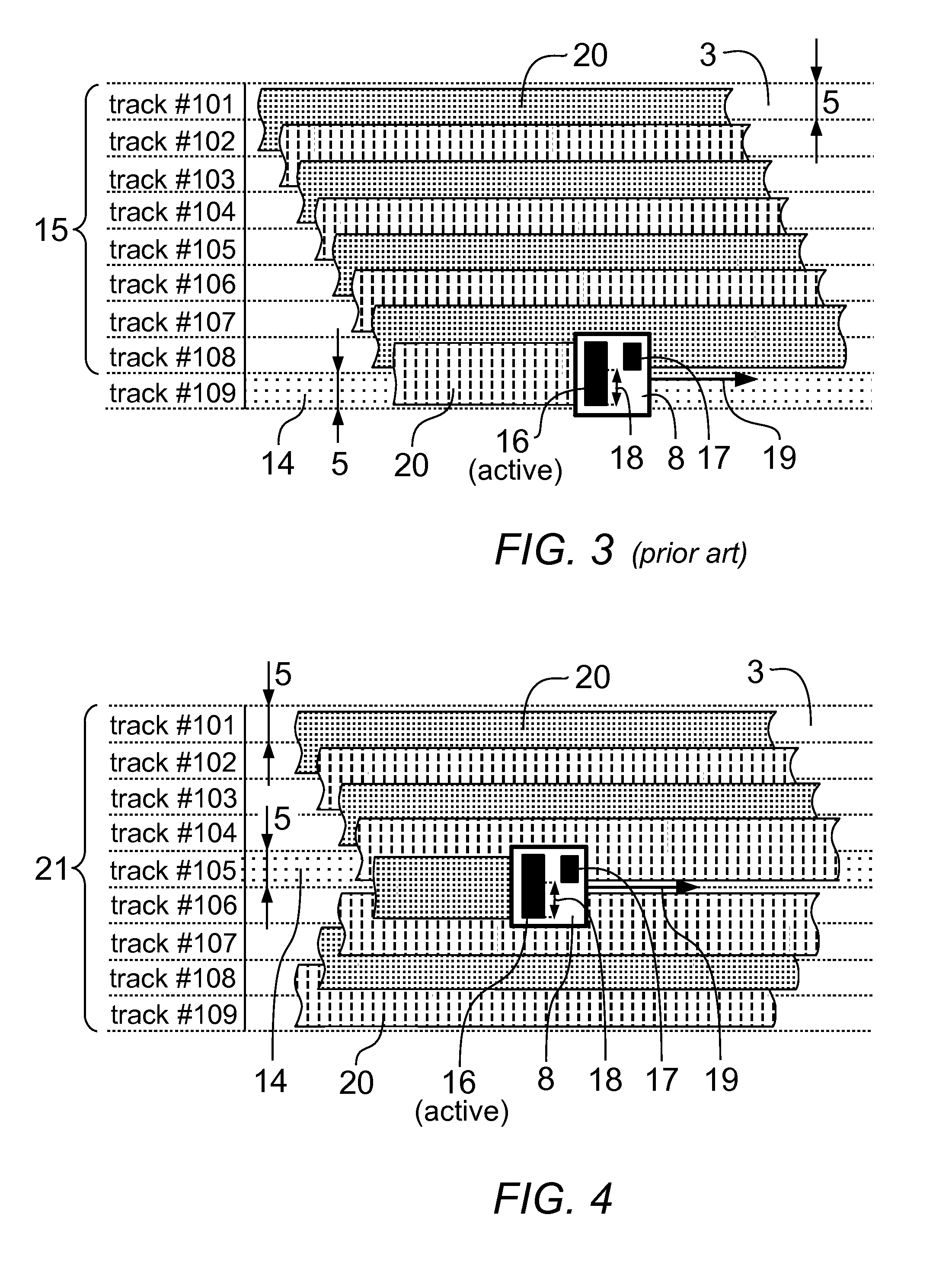Method for reducing write amplification on a data carrier with overlapping data tracks and device thereof
a data carrier and data track technology, applied in the field of data storage, can solve the problems of significant increase in the amount of data that must be read and written, unavoidable buffered data up to the next guard region, and the size of the write element is questionable, so as to reduce the amount of write amplification
- Summary
- Abstract
- Description
- Claims
- Application Information
AI Technical Summary
Benefits of technology
Problems solved by technology
Method used
Image
Examples
first embodiment
[0052]FIG. 4 and FIG. 5 show a first embodiment, introducing a novel band type for shingled magnetic recording, referred to herein as a symmetrical band 21. A symmetrical band 21 differs from a conventional band 15 in the position of the guard region 14, which is located in or near the middle of the band 21. For structural reasons, the guard region 14 in this case is defined as an integral part of the band 21. A plurality of symmetrical bands 21 can be arranged side-by-side without necessitating an additional gap exist between the band boundaries.
[0053]In the specific example shown in FIG. 4 the read / write head 8 and the number of tracks 3 per band 21 correspond to the previous example of a conventional band 15, that is, the write element 16 writes data tracks 20 that are twice as wide as the underlying track width 5, and the band 21 contains eight tracks 3 that can be used to store data. However, in this case, the guard track 14 is located on track #105 and, thus, in the middle of ...
second embodiment
[0060]The symmetrical overlaps of data tracks 20 within a band 21 may also be arranged in the opposite direction. In this case, the overlapping data tracks 20 may diverge in the middle of the band 22 or at a location near the middle, and the guard regions 14 may be located at the upper and lower band boundaries. This second embodiment is illustrated in FIG. 6. Here, the overlapping data tracks 20 diverge between tracks #104 and #105 and the guard tracks 14 are located at the band boundaries on track #100 and #109. In this context, the guard regions or guard tracks 14 are defined as separate instances and are not embedded within the band 22, as each guard region or guard track 14 may also be used by an adjacent band 22.
[0061]To fill the band 22 with data, overlapping data tracks 20 may be written by the wide write element 16 on both sides of the symmetrical band 22 from the inside out. This may result in overlaps in opposite radial directions, symmetrical to the center of the band 22...
third embodiment
[0062]FIG. 7 and FIG. 8 show a As in the previous examples, a read / write head 8 is used whose write element 16 writes data tracks 20 that are twice as wide as the track width 5. Tracks 3 are grouped into symmetrical bands 21, each comprising four usable tracks 3 and one guard track 14 at the center. In this example, a disk surface 2 incorporates 995 tracks, counted from track #000 to track #994, grouped into 199 bands.
[0063]For the sake of clarity and to keep the drawings manageable, each disk surface 2 in this embodiment has a very low track count. It is to be expressly noted that actual embodiments may have much larger track counts. Furthermore, it is pointed out that some parts, regions, or sections of the disk surface 2 may be used or reserved for other purposes. It should also be noted that the drawings represent only one disk surface 2. Further disk surfaces 2, if any, may be filled in the same manner.
[0064]The drawings illustrate how the tracks 3 of the SMR hard disk drive 1...
PUM
| Property | Measurement | Unit |
|---|---|---|
| width | aaaaa | aaaaa |
| distance | aaaaa | aaaaa |
| magnetic recording methodology | aaaaa | aaaaa |
Abstract
Description
Claims
Application Information
 Login to View More
Login to View More - R&D
- Intellectual Property
- Life Sciences
- Materials
- Tech Scout
- Unparalleled Data Quality
- Higher Quality Content
- 60% Fewer Hallucinations
Browse by: Latest US Patents, China's latest patents, Technical Efficacy Thesaurus, Application Domain, Technology Topic, Popular Technical Reports.
© 2025 PatSnap. All rights reserved.Legal|Privacy policy|Modern Slavery Act Transparency Statement|Sitemap|About US| Contact US: help@patsnap.com



